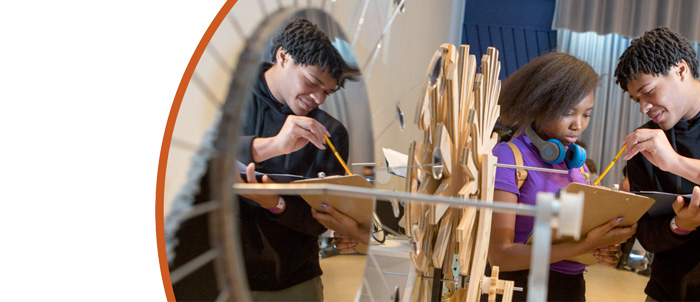The Role of Internal Attention in Undergraduate Biology Learning
Effective Years: 2022-2026
This award is funded in whole or in part under the American Rescue Plan Act of 2021 (Public Law 117-2). Attention is dynamic and tends to fluctuate between external and internal states, and thus focusing attention on an instructor in undergraduate science courses for a long period of time is extremely taxing. While external attention, the selection and modulation of sensory information (e.g., focusing on an instructor’s voice while ignoring background noise), has been studied extensively, very little is known about the functional significance of internal attention, the selection and modulation of internally generated thoughts (e.g., quietly thinking about a prompt while ignoring distracting thoughts). Some researchers and practitioners have suggested that “thinking” periods can promote the development of student ideas, while others argue that internally-generated thoughts are primarily off-task and lead to poor learning. The current CAREER project at the University of Connecticut will attempt to reconcile these competing claims by exploring how opportunities to focus attention internally during a biology lecture can support or jeopardize student learning. Further, since it is currently unknown how often students switch between internal and external states of attention and how long these states last, this project will manipulate the frequency and duration of “thinking” periods during a lecture and examine the impact on students’ conceptual understanding of core biology concepts. Whereas most prior research on student attention relies on self-reports, this project will explore and validate neural indicators of attention, measured with electroencephalography (EEG), which can be collected continuously without interfering with naturally occurring learning activities. Finally, the project will explore an innovative method of engaging undergraduate biology students as study participants as well as investigators of their own attentional states and associated brain activity. Taken together, this project will propel research both in the cognitive sciences and in discipline-based education research and inform the design of learning experiences in undergraduate science education that leverage attention fluctuations. The project is funded as a CAREER award from the EHR Core Research (ECR) program, which supports work that advances the fundamental research literature on STEM learning, with co-funding from the Perception, Action, Cognition (PAC) program in SBE.
Little is known about internal attention and how it can support or hinder student learning. Some Discipline-Based Education Researchers (DBER) and practitioners have proposed that providing students with opportunities to focus their attention internally during a lecture (such as the first step in the “think-pair-share” classroom activity) can promote student learning, but the results of cognitive science research on the topic has been inconclusive. Some studies link internally-generated thoughts to poor learning, whereas other studies have linked it to increased creativity, problem solving, and goal setting. The current project will attempt to reconcile this divide in the literature by: (1) investigating how internal attention (“thinking”) periods during a biology lecture can promote or hinder student learning by manipulating the frequency and duration of these periods as well as the guidance provided to students; (2) identifying neural signatures of attention fluctuations during biology learning using EEG (more specifically, EEG spectral power and brain-to-brain synchrony across students at different frequency bands will be extracted and compared between periods of internal and external attention); and (3) developing Course-based Undergraduate Research Experiences (CURE) in which biology students will investigate their own attention states and associated brain activity with low-cost, portable EEG technology. By investigating student attention using ecologically-valid biology materials and EEG technology that can be later deployed in classrooms, and by developing and disseminating an innovative CURE, the project will contribute to undergraduate STEM education and pave the way for future DBER-cognitive science cross-disciplinary research.
This award reflects NSF's statutory mission and has been deemed worthy of support through evaluation using the Foundation's intellectual merit and broader impacts review criteria.




